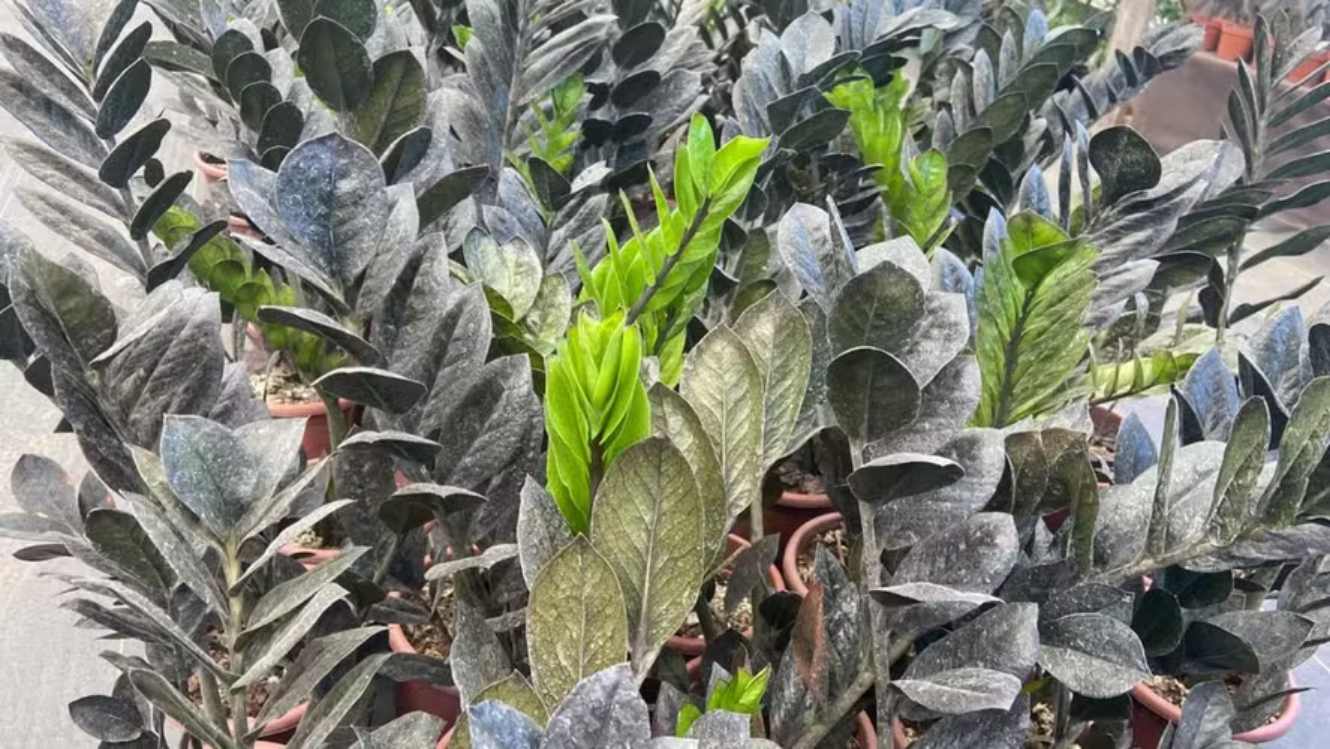Leaves Start Green, Then Darken as They Grow
Popularly known as the fortune plant, the zamioculca stands out in modern and sophisticated interior décor, such as offices and living rooms. While its green-leaf variety is widely recognized, did you know it also comes in a striking black-leaf version?
The black zamioculca, also known as Zamioculcas zamiifolia ‘Raven’, originates from Africa. Its leaves start green but gradually turn black as they grow, explains Neri Costa, owner of Fazenda das Suculentas.
“The color change occurred due to a spontaneous mutation. Other than the leaf color, there’s no difference in planting or daily care,” Costa notes.
Flowering of the Black Zamioculca
According to Costa, zamioculca flowers resemble those of anthuriums and usually bloom about three years after planting, once the plant matures.
Both plants belong to the Araceae family, sharing similar flowering traits. However, the zamioculca’s blooms are smaller and often go unnoticed. In contrast, anthurium flowers are vibrant and frequently used in floral arrangements.
Is the Black Zamioculca More Expensive?
Due to its limited production, the black zamioculca commands a higher price in florists and specialty stores.
Costa states that a 10–15 cm plant in an 11 cm pot starts at R$18. A pot with three seedlings can range from R$45 to R$75.
At Fazenda das Suculentas, the black variety is a bestseller among more than 600 species offered online.
“Its popularity is likely due to its rarity and the fact that it thrives indoors, making it perfect for shaded environments,” explains Luísa Venter, the company’s marketing manager.
Watering Tips for Black Zamioculca
As a succulent, the black zamioculca stores water in its roots, stems, and leaves, requiring infrequent watering. Check soil moisture by touching it—if it’s completely dry, it’s time to water. When in doubt, watering every two weeks is a safe guideline.
Light Requirements
Ideal for indoor settings, the black zamioculca thrives in low light and should be kept out of direct sunlight to prevent leaf damage.
Interestingly, the intensity of its dark hue correlates with light exposure: the less light it receives, the darker its leaves become.
Caution: It’s Toxic
Like the green-leaf variety, the black zamioculca contains calcium oxalate crystals in its roots, stems, and leaves, making it toxic to humans and pets. Ingesting the plant can lead to mouth irritation, nausea, respiratory distress, and intestinal issues.
A Symbol of Prosperity
In feng shui, the zamioculca represents prosperity and is believed to filter negative energy, making it a popular gift for wishing personal and professional success.
“The black zamioculca is often chosen because it’s unique and different, but there’s no distinction in symbolism compared to the green version,” says florist Cristiely Santos.




